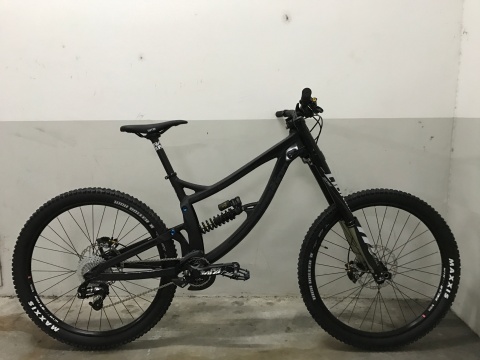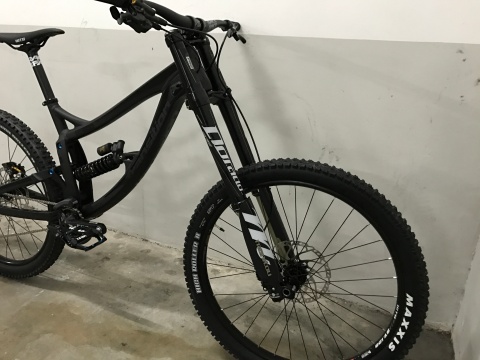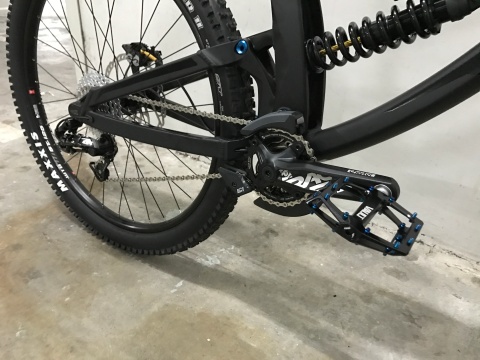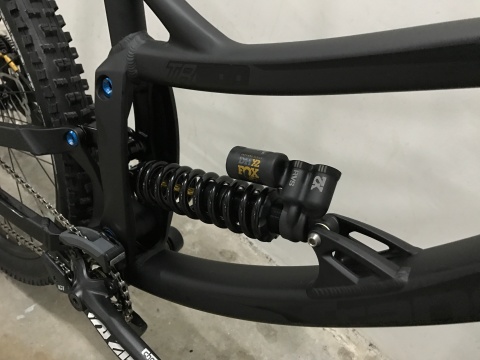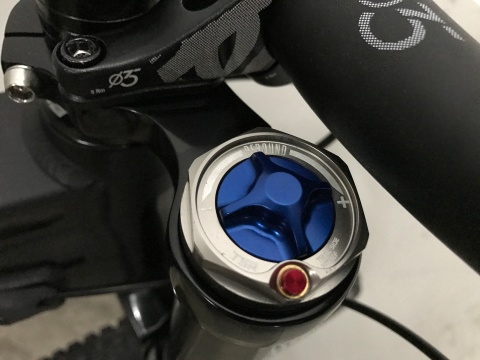
I recently wrote a post about my Banshee AMP build, and in it I mentioned that I decided to go with the Manitou Circus Expert fork. After spending some quality time shredding on the new rig I am confident enough to put my thoughts on the Circus Expert down on paper – err, screen.
Last year I installed a Circus Comp on my older DJ bike and spent a long time riding it. I was so impressed by how well the fork performed that I was itching to give the top model a go. After talking with Ed Kwaterski, the product manager at Manitou, about the new Banshee Amp project that I was putting together, he was more than happy to offer up the Circus Expert for review.

Specs
The Manitou Circus Expert is much like the Comp, but with a few changes. For starters there is a big difference in weight: at 2,134 grams the Expert is 300 grams lighter than the Comp.
Where did that weight savings come from? Well for one thing, the stanchions on the Expert are made from 7050 aluminum (high strength aircraft grade metal that is both stiff and fatigue resistant), compared to the 4130 chromoly in the Comp.
The second key feature is the lighter ACT spring in the Expert vs. the coil in the Comp. Lastly, the Expert’s steering crown is hollow for additional weight savings.
With the ACT spring, you get weight savings from having the preload adjustments taken care of by the air chamber, while the coil takes care of the travel. The ACT system also adds to the bottom-out resistance when you’re near the end of the travel. As an added measure, the Circus Expert includes dual bump stops (one per leg) to keep things from smashing together when you case it badly.
What remains the same is the proven 20mm hex through-axle and the two bolts per leg arrangement. The same goes for the new Absolute+ jumping stack and TPC rebound controls. They didn’t have to change these as they already worked very well.
One feature I am particularly fond of is the clown nose and the sticker pack. Nothing says fun like stickers and a clown nose! They were great entertainment for my son while I assembled the bike.

Installation
Setting up the Circus is pretty easy, and installation took all of fifteen minutes. If you have the tools and want to do it yourself this is an easy fork to attempt.
Tuning the fork didn’t take very long either. I just needed to keep my fork pump handy and I found that I needed a bit less than the recommended air setting for my weight. 200 pounds was in their low range of 20-35 PSI.
Personally, 22lbs of pressure seemed to work best for my weight, but again that is all rider preference. Maybe when I grow up and start doing 360′s I will jack up the pressure, but for now that’s where it’ll stay.
As far as the compression and rebound settings, I am 3 clicks away from lock out on the compression side and smack in the middle with rebound. The only issue with rebound on the Circus is that there are no clicks, just a dial knob. A felt marker can be helpful for keeping track of your favorite positions.


The Test
The Circus is definitely a great match for my Banshee AMP, as both the AMP and the Circus are lightweight and stiff. Overall control is synergistic.
As I explained above, the Circus Expert has some definite improvements over its heavier sibling, and those improvements translate to real-world increases in performance. For instance, the reduction in mass makes the front end lighter and more responsive.
Once tuned, I also found I preferred the overall feel of the spring compared to the all-coil feel of the Comp. The rise in rate as the fork compressed when landing was not sudden but noticeable.
Speaking of compression, the ABS+ damper is right on the money yet again. I found that locking it out on the pump track really gave the bike a bit more drive in the berms and completely eliminated any dive. Even when it was locked out, the damper still functioned respectably.
I tend to lock out the fork when practicing skinnies. At times when I did fall off, usually at very slow speeds but with sudden front-heavy drop offs, I was happy to have that lock on preventing the bike from fully compressing.
On the bigger jumps I kept the compression settings at usually 2 – 3 clicks from lock out. At that setting there was just the right amount of compression dampening. After a while, though, the higher rates of compression did make my wrists a bit sore. It’s a small price to pay for good control over the wheel.

Rebound was a set-and-almost-forget situation. Seeing that most of my DJ riding is usually smooth with only one or two big hits, the rebound settings generally stay the same. The Circus Expert rebound worked consistently well. On the progressive jumps I didn’t feel any packing down, nor did I get the fork to toss me off the bike. The fork just provided good control.
Over the duration of my review I had no issues at all with the fork: no leaks, no creaks, no anything else. I really think Manitou has a winner here for a DJ/4x-style fork. At a cost of $449 MSRP, this fork won’t break the bank and you can still afford to take the kids to the real Circus!
